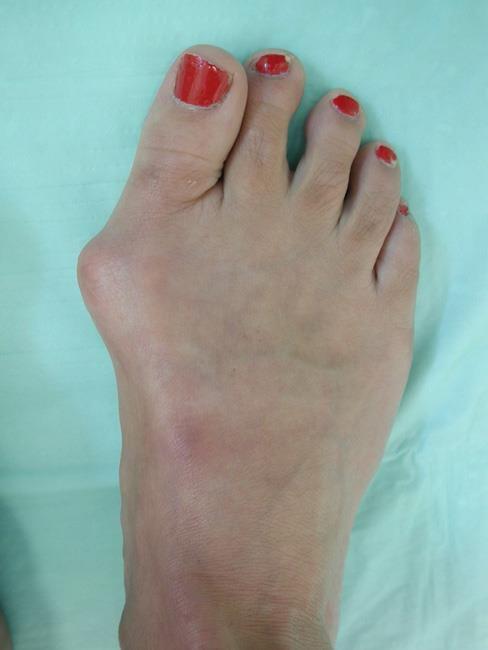Bunions

A bunion is a bony bump that forms on the joint at the base of the big toe. It occurs when the big toe pushes against the adjacent toe, causing the joint of the big toe to enlarge and stick out. Over time, the misalignment can worsen, leading to pain, swelling, and stiffness in the joint.
Causes:
•Genetics: Many people inherit a foot type that makes them more prone to developing bunions.
•Footwear: Wearing tight, narrow, or high-heeled shoes can contribute to bunion formation by forcing the toes into an unnatural position.
•Foot Injuries: Trauma to the foot can lead to changes in the joint and bunion formation.
•Arthritis: Conditions like rheumatoid arthritis can affect the joints and contribute to bunions.
•Flat Feet or Overpronation: These conditions can increase the risk of developing bunions because they alter the way weight is distributed across the foot.
Symptoms:
•A visible bump on the side of the foot at the base of the big toe.
•Pain or tenderness around the big toe joint, especially when walking or wearing shoes.
•Redness or inflammation around the joint.
•Restricted movement of the big toe.
•Development of calluses or corns where the toes overlap.
Symptoms:
• Footwear changes: Wearing shoes with a wider toe box and avoiding high heels can relieve pressure on the bunion.
•Padding: Using bunion pads or cushions can reduce discomfort by preventing the bunion from rubbing against the shoe.
•Orthotics: Custom insoles may help redistribute pressure and correct biomechanical issues that contribute to bunions.
•Medication: Over-the-counter pain relievers or anti-inflammatory medications can reduce pain and swelling.
•Physical therapy: Stretching exercises and strengthening the muscles around the joint can help manage symptoms.
•Surgery: If conservative treatments fail and the bunion becomes severely painful or limits activity, surgery may be recommended to realign the joint and remove the bony bump.
Managing bunions early can help slow their progression and reduce the need for surgical intervention.

